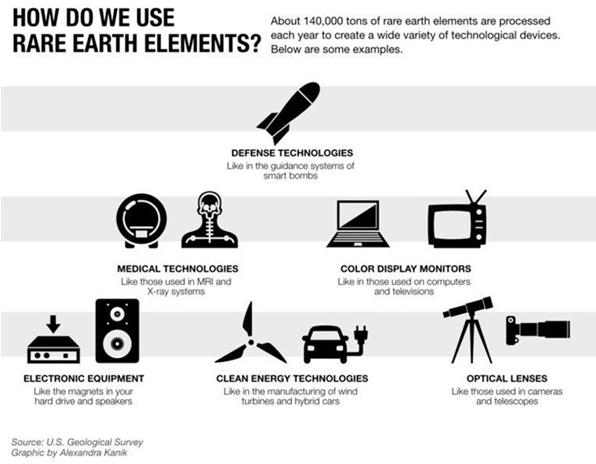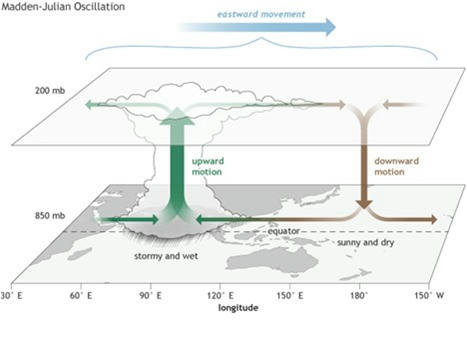Table of Contents
Q) Consider the following statements about Rare earth elements :-
A) China is the leading producer of rare earth elements.
B) They have been named so because they are very rare.
C) They are present in block D and F of the periodic table.
Options :
- A & B are correct
- B & C are correct
- A & C are correct
- All are correct
RARE EARTH METALS :-
- Rare earth elements are a set of seventeen chemical elements in the periodic table, specifically the fifteen lanthanides plus scandium and yttrium.

- One of the Rare Earths, promethium, is radioactive.
- The extraction of REMs is one of the most environmentally negative and toxic generating of all mining
- Disproportionate rare earth mining has resulted in landslides, clogged rivers, environmental pollution emergencies and even major accidents and disasters, causing great damage to people’s safety and health and the ecological environment.
- China dominates the production of these elements.
- Recently, the US Army started the construction of a Rare Earths processing facility to secure the domestic supply of these rare earth elements that are used to make military weapons and electronics.
- The decision was because China threatened to stop exporting Rare Earth materials to the US amid the ongoing trade war between the countries.

Goldschmidtite :-
- Recently a new mineral was discovered inside a diamond unearthed from a mine in South Africa.
- It has been found in Earth’s Mantle
- Goldschmidtite has high concentrations of niobium, potassium and the rare earth elements lanthanum and cerium which is quite unusual for a mineral coming from Earth’s mantle as it is dominated by elements such as magnesium and iron.
- The found single grain is dark green in colour and opaque. The mineral has been named after the Norwegian scientist Victor Moritz Goldschmidt, who is considered as the founder of Modern Geochemistry.
Q) Which of these cyclones came in Arabian sea?
A)Kyarr
B)Vayu
C)Hikka
D)Pawan
E)Bulbul
- A,B,E
- B,C
- C,D,E
- A,B,C,D
8 North Indian Ocean Cyclones of 2019 :-
- The year 2019 was one of the most active North Indian Ocean cyclone seasons on record. There were eight cyclonic storms in and around India—the highest number of cyclones in a single year since 1976.
- Out of 8 cyclones, 3 were formed over the Bay of Bengal (BoB) and 5 over the Arabian Sea (AS)
- Of these eight storms, a record-breaking six intensified into ‘very severe’ cyclones and one to super cyclonic storm- Cyclone Kyarr.
- In 2019, the Indian Ocean recorded the strongest ever dipole (warming of waters).
- As per scientists, a positive IOD (Indian Ocean Dipole) means warming of the west Indian Ocean and Arabian Sea. A positive IOD means the waters near Somalia are warmer than Indonesia.
- This helps formation of a low-pressure area which later leads to cyclone formation.
- Also, this year, IMD stated that the sea surface temperature was nearly 27 to 29 degrees Celsius, which is more than normal. This phenomenon is attributed to the formation of cyclones in the Indian Ocean.
Pabuk – January 2019 :-
- Pabuk originally formed as a tropical storm over the South China Sea on January 1, 2019, and after making landfall over Southern Thailand on January 4, it crossed into the Andaman Sea.
- Upon its entry into the Bay of Bengal, Pabuk became the earliest-forming cyclonic storm of the calendar year to enter the North Indian Ocean basin. Pabuk caused no damage on Indian shores, as its entry into the North Indian Ocean caused it to weaken into a ‘low’ on January 7.
- It dissipated the next day. However, Pabuk was the cause of ten deaths before it reached the Indian The storm killed eight people post-landfall in Thailand, and one each in Vietnam and Malaysia. The estimated damage across Thailand was close to 5 billion baht (11.9 hundred crore rupees).
Fani – April 2019 :-
- Extremely Severe Cyclonic Storm Fani was the first severe cyclonic storm of last year, and also the strongest tropical cyclone to hit Odisha since 1999.
- Originating as a tropical depression west of Sumatra in the Indian Ocean on April 26, 2019, While vertical wind shear (difference in wind speed or direction over a relatively short distance in the atmosphere) initially restricted its growth, subsequent favourable conditions later led to its rapid intensification into an extremely severe cyclonic storm.
- Fani reached its peak intensity on May 2, 2019, as a high-end Category 4 major hurricane, with maximum sustained wind speeds of 209-251 kmph. A day later, Fani made landfall at Puri, Odisha, and weakened into a Category 1-equivalent ‘very severe’ cyclonic storm soon after.
- To prevent the storm from wreaking havoc, a total of 11 lakh people were evacuated from damage-prone areas—a feat that led to the UN O ce for Disaster Risk Reduction (ODRR) praising India for greatly minimising loss of life during the episode.
- In spite of the preparations, however, Fani caused at least 89 deaths: 72 in India and 17 in Bangladesh.
- A majority of the lives were lost in Odisha, with the state recording a death toll of 64. Heavy rains, collapsing trees and infrastructure, strong winds, and lightning strikes were what caused most of the The overall damage caused by Fani in India and Bangladesh combined is estimated to be around ₹58,000 crore ($8.1 billion). In terms of loss of human life, Fani was the fourth-most devastating natural disaster to hit India in 2019.
Cyclone Vayu – June 2019 :-
- Vayu was the second Very Severe Cyclonic Storm of the 2019 North Indian Ocean cyclone season, and the first to form in the Arabian Sea.
- Vayu was first noted by the IMD on June 9, 2019, as it originated from a low pressure area near the northern Maldives. Thereafter, it consolidated into a depression, tracked in the north-northwest direction over the eastern Arabian Sea, and intensified into a cyclonic storm on June 10. Following rapid intensification on June 11, Vayu reached its peak intensity as a high-end Very Severe Cyclonic Storm on June 12, with three-minute sustained winds of 145 kmph. While it was initially expected to make landfall over Gujarat, the storm abruptly turned westwards on June 13, moving away from the state coast.
- Nevertheless, it did have a minor impact on India’s western coastline, causing strong and gusty winds; generating high, ship-capsizing waves; and bringing about rainfall and thunderstorms over the coastal regions of Gujarat and Maharashtra.
- Furthermore, Vayu’s formation led to further delay in the monsoon’s progression towards northern India, as the cyclone drew clouds and moisture over the Arabian Sea and away from the developing monsoon
- It forced the evacuation of 300,000 residents in coastal Gujarat.
Hikaa – September 2019 :-
- Hikaa originally formed as a depression in the Arabian Sea in September 2019, gradually intensified into a cyclonic storm, and soon after reached its peak intensity as a very severe cyclonic storm, with 3-minute sustained wind speeds of 145 kmph.
- While it was expected to cause strong winds over the Gujarat coast—which it did—the system predictably moved in the opposite direction: westwards, towards Oman. Dry air intrusion led to its weakening, and Hikaa made landfall over Oman as a severe tropical cyclone. As it moved inland, it quickly weakened and later dissipated.
- Despite having stayed away from the Indian coast, Hikaa still managed to kill 11 Indian fishermen by sinking their boat off the Omani coast. As of October 17, 2019, six of them were confirmed dead, while five remain missing.
Kyarr – October 2019 :-
- Kyarr, the fifth cyclonic storm of the 2019 season, was also the first super cyclonic storm in the North Indian Ocean since Gonu in 2007.
- It was also the strongest tropical cyclone that has ever been recorded in the Arabian Sea, and the second-most intense tropical cyclone in North Indian Ocean history, behind the 1999 Odisha cyclone.
- Having developed from a low-pressure system near the Equator, it formed as a depression in the Arabian Sea on October 24, 2019.
- Owing to high sea surface temperatures, low shear, and a moist environment, Kyarr underwent rapid intensification, transforming from a very severe cyclonic storm on October 25 to a super cyclonic storm by October 27.
- At its peak intensity, the system boasted of 250 kmph sustained winds.
- Kyarr caused strong winds, heavy rainfall and flash flooding in Maharashtra, Goa and Karnataka.
Maha – October-November 2019 :-
- Maha formed as a well-marked low pressure area in the Arabian Sea, and strengthened into a depression on October 30, 2019. As the system entered a favourable environment, it developed into a Cyclonic Storm on November 1.
- Thereafter, Maha went through two days of fluctuation followed by two days of rapid intensification—as it moved parallel to the Indian coast, Maha grew into a Very Severe Cyclonic Storm on Nov 3, and into an Extremely Severe Cyclonic Storm on Nov 4.
- However, upwelling (a term for rising, colder ocean water displacing the warmer water on the surface) eventually took its toll on Maha, and the storm made landfall over Gujarat as a mere depression.
- As it weakened, it did cause strong winds and rainfall of different intensities over Gujarat, Maharashtra, and the Union Territories of Daman & Diu and Dadra & Nagar Haveli.
Bulbul – October-November 2019 :-
- On October 28, 2019, a tropical depression formed near Palau in the Western Pacific Ocean, and two days later, it was named Matmo by the Japan Meteorological Agency (JMA).
- After making landfall over Vietnam, it weakened as it crossed over the Indochinese Peninsula for the next several days, deteriorating into a low pressure system.
- However, on November 2, Matmo’s remnants reemerged in the Andaman Sea, and the system began to reorganise and redevelop into a depression, effectively giving birth to the cyclonic storm named Bulbul.
- Intensification continued as Bulbul tracked northwards in the Bay of Bengal, and it finally made landfall near Sagar Island in West Bengal as a Very Severe Cyclonic Storm on November 9, causing extremely heavy rainfall and winds of up to 135 km/h across southern West Bengal.
- However, the system rapidly weakened into a deep depression just a day after landfall. Nevertheless, Bulbul directly affected 35 lakh people in West Bengal, while killing 14. Close to 3,681,680 acres of crops were destroyed, with losses in the state reaching Rs 238 hundred crore rupees (US$3.35 billion).
- The state of Odisha also suffered agricultural damage, with 490,000 acres worth of crops destroyed state-wide. Bulbul also took the lives of two state residents in storm-related incidents.
- As for Bangladesh, Bulbul severely affected the country’s agricultural industry, damaging roughly 14 percent of the nation’s total farmland. Estimates suggest the total crop loss suffered was worth 2.21 hundred crore rupees (US$31 million). Moreover, a total of 21 lakh people were evacuated from Bangladeshi coastal areas, but the cyclone nonetheless caused 25 deaths in the country.
Pawan – December 2019 :-
- A depression that formed over the southwestern Arabian Sea, east of Somalia on December 2 strengthened into a cyclonic storm two days later, earning the name Pawan.
- As it gained strength, it continued north before taking a westward turn, away from India and towards
- Pawan made landfall in the Puntland region of Somalia on December 6, causing heavy rains, mudslides, and flash flooding in the region. It degenerated into a well-marked low-pressure area inland on December 7, but not before killing at least six people.
Q) Which is true about Madden-Julian Oscillation?
A)It moves from west to east
B)It is seen in pacific and Indian ocean
Options :
- Both A & B are correct
- Only A is correct
- Only B is correct
- Neither of the two is correct
Madden-Julian Oscillation :-
- It starts when water vapor rises out of the Indian Ocean every 30 to 60 days to create a major ocean storm that travels west to east from near Seychelles off Africa toward India, crosses into the tropical Pacific Ocean and eventually affects weather patterns across America.
- The MJO can be characterized as an eastward moving “pulse” of cloud and rainfall near the equator that typically recurs every 30 to 60 days and is a feature of the tropical atmosphere.
- The effect of the MJO is witnessed mainly in the tropical region, in the band between 30 degrees North and 30 degrees South of the equator
- MJO effects are most evident over the Indian Ocean and western equatorial Pacific.
- MJO goes through eight phases.
- When it is over the Indian Ocean during the Monsoon season, it brings good rainfall over the Indian On the other hand, when it witnesses a longer cycle and stays over the Pacific Ocean, MJO brings bad news for the Indian Monsoon.

Latest Burning Issues | Free PDF


























 WhatsApp
WhatsApp